History and technology of sugar beet cultivation

Sugar beet is a technical culture. The main processing is related to the production of sugar. In many regions, significant areas have been allocated for this crop and technology for cultivating sugar beets and its further processing has been developed.
We will try to understand the characteristics of sugar beets as an agricultural crop and the peculiarities of its cultivation, we will find out how sugar production from beets developed in European countries.
Content:
- The history of the emergence of sugar production in Europe from sugar beets
- Botanical description of sugar beet, its varieties and hybrids
- Basic agrotechnical techniques for growing sugar beets
The history of the emergence of sugar production in Europe from sugar beets
Until the mid-eighteenth century, sugar beets did not exist as a species. This technical subspecies owes its appearance to the German chemist Andreas Sigismund Marggraff. The scientist became interested in sugar crystals seen under a microscope on a cut of a beet root, which gave rise to breeders obtaining a subspecies of the plant with a high content of sucrose.
If in tubers fodder beet from the mid-18th century contained no more than 2% sugar, but in modern varieties its content reaches 20%. Marggraf's work was continued by his student Franz Karl Achard. It was this man who was the founder of the production process for producing sugar from sugar beets and stood at the origins of the entire sugar industry in Europe.
Its first factory was already operating in 1801. It was at this plant that specialists in sugar production were trained. Thus, beet sugar appeared on the world market as a competitor to sugar from sugarcane, which was originally imported from India. Later they learned to grow it in Egypt, Sicily, and Spain. From there, Columbus brought the culture to America.
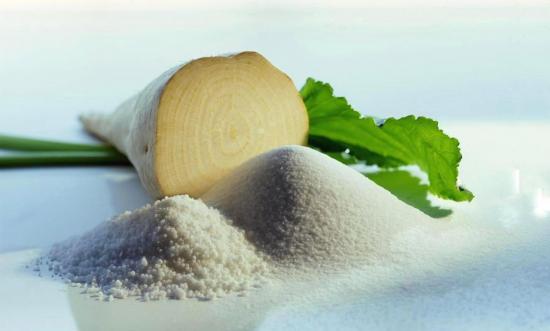
Reed began to be grown on the islands of the Caribbean and Central America. Until the beginning of the 19th century and the development of sugar production from beets, this product was obtained only from cane and it remained a luxury item in Europe, and was available mainly only to noble and wealthy families. Let's try to figure out why this particular beet became the raw material for sugar production.
Botanical description of sugar beet, its varieties and hybrids
Sugar beet is a subspecies of the common beet from the genus Beetroot of the Chenopodiaceae family, although recently it has been classified as a member of the Amaranthaceae family. Life form: biennial herbaceous plant. In the first year after sowing, the plant develops a rosette of basal leaves.
By the end of the growing season, a fairly large root crop is formed. It is at this stage that it is dug up and sent either for processing to sugar factories or to feed farm animals. Average weight of root vegetables sugar beets about 0.6 kg - 0.8 kg. In the second year, a tall, straight stem with small leaves appears from the fleshy root.
On it there are inconspicuous flowers collected in inflorescences of ears. The fruit is single-seeded, due to the fusion of flowers in inflorescences, infructescences are formed, the number of seeds in which is from 2 to 6. Sugar beets have varieties with a single arrangement of fruits.When reaching technical maturity, sugar beet roots contain the following substances:
- water up to 75%
- sucrose up to 17.5%
- fiber up to 1.2%
- pectin up to 2.3%
- cellulose up to 1.1%
- ash up to 0.3%
Cultivation of sugar beets on video:
However, it should be noted that the sucrose content depends directly on the variety and growing conditions. The most “sweet” varieties and hybrids of sugar beets include the following:
- Eureka, a hybrid of Belgian selection, sugar content from 16.4 to 19%, root weight on average 0.62 kg
- Zawisza, a hybrid of Polish selection, sucrose content 18.0%, average root weight 0.77 kg
- Mississippi, US hybrid selection, sucrose content from 16.8 to 21%, root weight 0.810 kg
- Ramonskaya single-seeded 47, domestic selection variety, sucrose content 18.6%
- Kuban MS 81, hybrid of domestic selection, single-seeded, sucrose content 16.5%, disease resistant
It should be said that foreign hybrids have good characteristics, but given the political situation and economic situation, the cost of imported seeds has increased. In addition, in order for varietal characteristics to manifest themselves in full, it is necessary to create almost ideal conditions for growing foreign-bred sugar beet hybrids. Therefore, it is more advisable to rely on domestic varieties with an accumulation of sucrose at the time of harvesting of at least 16.5%.
Basic agrotechnical techniques for growing sugar beets
To successfully grow sugar beets, it is important to comply with the following conditions:
- warm
- light
- water
The best soil for this crop is fertile black soil or well-fertilized soil. Plowing or digging the soil is carried out only in the fall, with the simultaneous application of organic and mineral fertilizers.When digging by hand, the digging depth is about 25 - 30 cm. The optimal predecessors for sugar beets are cereals or legumes. In addition, autumn soil preparation allows for maximum moisture retention.
With the onset of spring, after the ground has thawed, it is necessary to carry out harrowing to a depth of 7 - 8 cm and further cultivation just before sowing the beets. When cultivating beds manually, this work is carried out either using a motor cultivator or a simple rake.
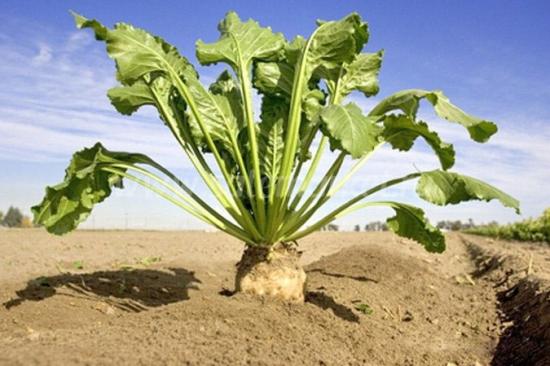
When sowing, seeds are sown to a depth of 3 cm. The soil temperature at this depth should not be lower than +6 degrees. The distance between plants is 3-4 cm, the minimum width between rows is 40 - 45 cm. With mechanical sowing, these distances can be greater to ensure further care by mechanical means.
With favorable humidity and temperature not lower than +10 +12 degrees, seed germination occurs on the 8th - 9th day. If during the first days after sowing a crust has formed on the soil, then approximately 5-6 days after the seeds were sown, the soil is carefully loosened. If the beets have sprouted too thickly, then after the first pair of true leaves appear, the soil is loosened again while thinning out the seedlings.
It may be necessary to thin out the beets several times until the distance between neighboring plants is from 18 to 30 cm.
In the industrial production of beets, such thinning is called bouquet; it occurs when equipment with special mounted implements equipped with razors processes the crops by cutting off excess shoots. When growing a small amount of beets, you can try to carefully remove the excess shoots from the ground and plant them in a new place.
Further care of sugar beets consists of removing weeds while simultaneously loosening and watering. During dry times, beets need to be watered once every 6-7 days with plenty of water. The harvest begins depending on the ripening period of the sugar crop. beets. Early varieties are ready for harvest by the beginning of September. If basic agricultural practices are followed, the yield of sugar beet will correspond to the declared varietal yield.




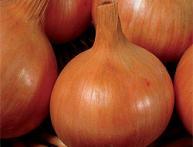
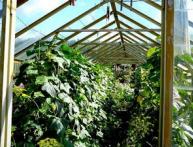
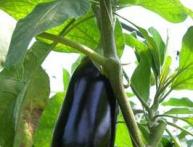
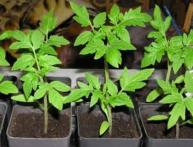
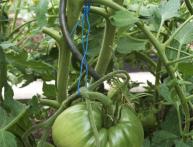
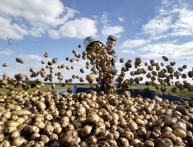
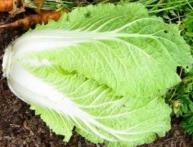
Comments
Beets are much easier to grow than sugar cane. It also grows well in harsher climates. Therefore, this root crop is the main crop for sugar production. In addition, to my taste, beet sugar tastes better than cane sugar.